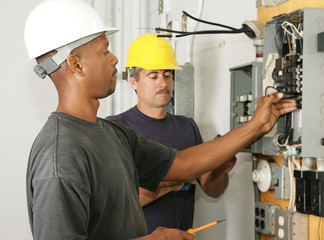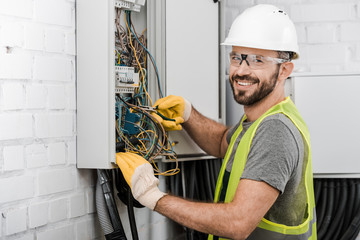Whether you are a homeowner looking for electrical services in your home, or an electrician tasked with repairing your electrical system, you can learn about the different tools and techniques used in the industry. Learn more about the common electrical issues, including GFCI outlets, short circuits, and tripped circuit breakers, and how to label your electrical service properly.

Having a basic understanding of the electricity in your home is important. This knowledge will save you money and make your life easier. The best way to handle electrical problems is to have a qualified electrician handle the job. An experienced electrician will be able to identify the source of the problem and correct it quickly and safely.
A tripped breaker is a common electrical problem that can be easily repaired. It can also be an indication of a more serious problem. If it is left unchecked, it can become a fire hazard. A tripped light switch is another common electrical issue. An overloaded circuit usually causes it. You may need to add a new circuit or replace the switch to address the issue.
Whether you’re an electrician looking to do a residential or commercial project, you’ll need a good assortment of specialized tools. The list below includes some of the most common tools used by electricians. A wire stripper is an indispensable tool for any electrician. It removes the insulation from an electrical wire’s outer sheath. Some strippers can also cut conduit. These tools are available in a variety of sizes and styles.
Depending on the type of stripper you have, you can also remove the plastic coating from the wire. It’s important to get a stripper that’s suitable for your needs. Some come with built-in voltage detectors, which help determine the voltage level in a certain area.
GFCI outlets are an excellent addition to your home’s electrical safety. They monitor electric current on the neutral lines of your home and protect you and others from dangerous electrical shocks. GFCIs are especially important in outdoor settings. They prevent serious electrical shocks and fires. In some cases, they can save lives.
GFCIs work by monitoring the current on the neutral side of the circuit and cutting power when an imbalance is detected. The sensor can detect a slight difference in current as small as 4-5 milliamperes. A sudden imbalance of 5 milliamperes or more will trip the GFCI and disconnect your power supply.
Creating and maintaining proper labeling of the electrical service is one of the most important steps in electrical safety. It allows you to inspect your panel safely and easily identify circuit breakers in an emergency. The following tips can help you make the most of your labeling efforts.
The most important thing to remember is that labels are meant to be durable. They must be able to withstand the harsh environment. They must also be easy to read at a distance. Creating and maintaining proper labeling of the electric service is crucial in protecting your family and workplace from accidents. The most inexpensive and easiest way to do this is by using labels.
Keeping your home safe from short circuits can be a simple process. Please make sure that your electrical systems are maintained regularly. You also must be aware of the signs and symptoms of a short circuit in your home. If you notice any of these, it’s time to call an electrician.
The most common cause of short circuits is faulty wiring. When the wires get too hot, they can accidentally complete a “short circuit.” It’s important to take precautions to prevent this from happening. Another common cause of a short circuit is a faulty appliance. For example, if you have a dryer that is not properly insulated, you can get a short circuit.
Having tripped circuit breakers in your electrical services can indicate something more serious. These tripped breakers can result from a short circuit, overload, or ground fault. By understanding the cause of a tripped breaker, you can take steps to repair the problem.
Overloads are the most common cause of tripped circuit breakers. They occur when too many appliances or lights are running simultaneously. This can overheat your wiring and put all the devices at risk. Unplugging devices can lessen the load.
Ground faults are the other common cause of tripped circuit breakers. These happen when your hot wires come in contact with your copper or bare ground wire. When this happens, your breaker will trip, and you need to reset it to get electricity flowing again.


